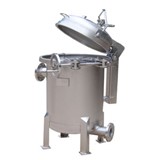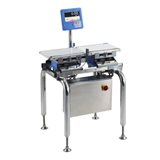Questions are being raised in particular about the viability of some mining investment plans, in light of tumbling coal and iron ore prices and slower economic growth in China, Australia's largest trading partner.
Treasurer Wayne Swan believes fears about Australia's dependence on Asia, stoked by short-term data and commodity price moves, only cloud the debate about the nation's economic future.
"It's extremely difficult to make a case that we should be doing less trade with the fastest-growing, most dynamic region in the world," he told a conference last week.
"It's extremely difficult to make the case that we should tie our economic fortunes more closely with the anaemic growth and bleak prospects faced in most parts of the developed world."
The conference, about structural change and the rise of Asia, was one of several held in recent weeks, ahead of the coming white paper on the Asian Century.
Swan describes the white paper as a "long-term planning tool" that will set ambitious targets for Australia to achieve by 2025.
It will present ways to lift productivity through the five key policy pillars — education and skills, innovation, infrastructure, tax reform and regulatory reform.
But former Treasury secretary Ken Henry, who is authoring the white paper, says it will not offer "instant solutions" to the tough structural adjustments that face Australia, nor is it a question of "throwing money" at the problem.
Neither should the government be expected to do all the heavy lifting as Australia aims for closer ties with its Asian neighbours.
Business, communities, schools and universities also will have to play a major role.
Describing Australia as a "lifestyle superpower", Henry said there was still a lot of work to do to build the country's place in the region and gain a better understanding of regional cultures and the way they do business.
"No one should think that our geography and our geology alone provide us with any assurance of success," he told the Australian National Conference on Resources and Energy conference.
Having travelled around Asia in preparing the paper, Henry said it was difficult to share some of the pessimism about the region, which will be the fastest growing area in the world by 2025 — even if it achieves only half its expected potential.
He compared it to the foolishness of writing off Japan as a major destination for Australian exports a decade ago, after its first 10 years of weak economic growth when the so-called "bubble economy" burst.
Even though Japan endured another decade of weak growth, it still takes the same proportion of Australia's total merchandise exports as it did 10 years ago.
Henry also compared the recent "overtone of fear" about Chinese investment with concerns over Japan in the 1950s, when prime minister Robert Menzies travelled to Tokyo to begin trade negotiations, only 15 years after the Japanese bombing of Darwin.
"The antagonism of the Australian people towards Japan at the time was enormous, and yet Australia's leaders had the foresight, and I should say the courage, to know even then Australia's future was linked to region in which we live," he said.
Australia has been shipping to Japan since 1957 and is the nation's second-largest trading partner, after being pipped by China in recent years.
A theme of these Asian-linked conferences is the expectation by the federal government, Treasury and the Reserve Bank that the mining boom will have three phases.
They are the commodity price boom that appears to have peaked in the September quarter of 2011, the ongoing mining investment boom, and the eventual export volume boom.
After all, the much documented "investment pipeline" is about raising the country's resources export capacity.
Despite a sharp expected drop in commodity prices, the latest Bureau of Resources and Energy Economics forecasts, released this week, predict a modest two per cent fall in resource and energy export earnings in 2012/13.
The estimated earnings figure is still a staggering $189 billion.
However, the short-term volatility in commodity prices has added to the case for a further cut in the Reserve Bank's cash rate.
The central bank noted in the minutes of its September 4 meeting, also released this week, that Chinese growth had been a touch weaker than earlier thought, resulting in a sharp decline in spot prices for iron ore and coking coal, which could affect exports.
"The current assessment of the inflation outlook continued to provide scope to adjust policy in response to any significant deterioration in the outlook for growth," the central bank said.
Financial markets see a greater than 50 per cent chance of a rate cut in October.













